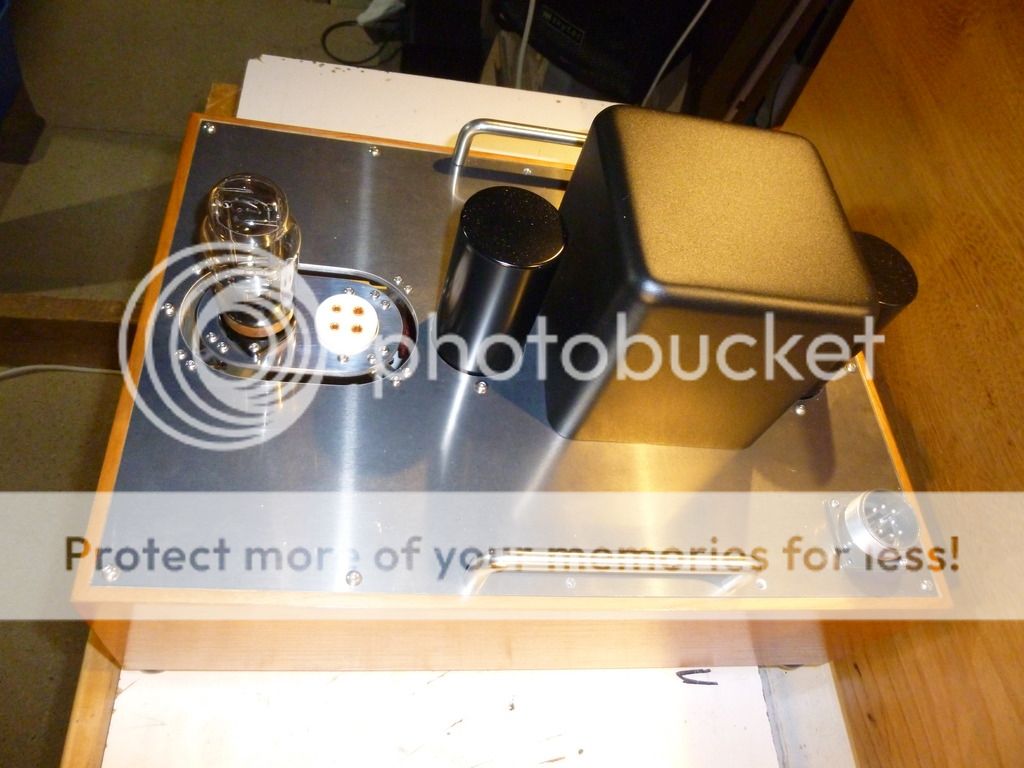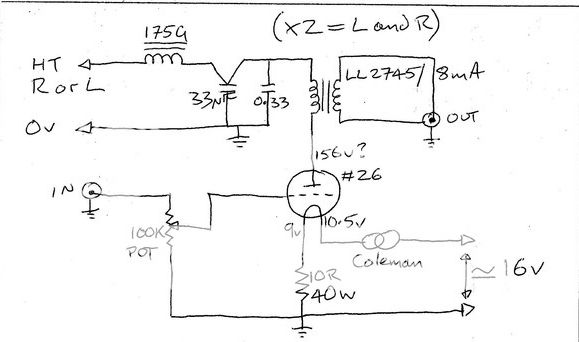if you want to test your caps, solder cap into preamp output and bias with 1m to output.
then measure the dc voltage accross the resistor till it stabilizes. compare results with 200 , 400 or 1000v caps.
AC test would be to run 10khz into a 1k ohm load and measure voltage drop accross capacitor.
Appreciate if you could draw a simple diagram for each the above tests please ??
The (theoretically) maximum output swing is V(B+) peek to peek, so output capacitor voltage range must exceed this value (about 1.5 multiplier).what is the lowest voltage rating that I could use please ??
So if you have 220V as B+, 400V capacitor is enough.
If you have 400V, 630V cap required.
Thankyou.
Just for example, if I have 400V B+, can I use 400V main cap, and by pass it with a 1600V small cap ??
No, better use 450V or more.
I added an octal socket to my PSU, so I could quickly compare the AZ1 meshplate with Mullard AZ31s, supposedly the same as an ST AZ1 but with an octal base. The AZ1 meshplate sounded distinctly smoother and more refined, just the way it had against an ST AZ1. I use the AZ31 or ST AZ1 for testing now, rather than risk the meshplate!
This is the PSU chassis before I changed the second socket from UX4 to octal.

This is the PSU chassis before I changed the second socket from UX4 to octal.

Now that's an ouch for me . It's getting very expensive
the AZ1 especially the mesh plates. Isn't there any other
varieties that sound just as open ?
It's more to sound and musicality than rectifiers. I'm using the 5y3g in my 26 preamp and it sounds just fine. Just build the amp with some flexibility (such as a removable board for the rectifier and some space for a couple of big wirewound resistors), and then you know you can add some expensive mesh'es later on. Anyway, the AZ1 is hardly the last word in mesh rectifiers. There are even better and more expensive ones out there.
By the way - Happy Easter fellow 26 and 01A preamp constructors!
I'm not surprised.went back to the meshplate AZ1.
Mesh AZ1 (for preamp) is the best choice.
I'm playing with the AZ31 now, and it's lively, but "splashy", if that makes any sense! Some people might prefer it, as some prefer pop over classical (for example, not a judgmental opinion), but not so much to my taste. Still, I'll leave it in for a bit and see if I appreciate it more when I'm sober!I'm not surprised.
Mesh AZ1 (for preamp) is the best choice.
I love valves, the way I can mess around with the sound. I just wish I was a bit cleverer and understood them more.
Assuming that the Filament Regulator is near to the valve-socket, and all of the Raw DC caps are in the power-chassis,
AND
The B+ supply capacitors and chokes are in the Power chassis (a small cap in the signal chassis is OK).....
If you build it like this, the 'umbilical cable' should have only static dc voltages, and steady dc current.
Like this, running the B+ and filament raw dc in the cable is OK.
But if there is any pulsing-current in the cable, caused by capacitors in the signal-chassis - there will be some noise-coupling.
AND
The B+ supply capacitors and chokes are in the Power chassis (a small cap in the signal chassis is OK).....
If you build it like this, the 'umbilical cable' should have only static dc voltages, and steady dc current.
Like this, running the B+ and filament raw dc in the cable is OK.
But if there is any pulsing-current in the cable, caused by capacitors in the signal-chassis - there will be some noise-coupling.
- Home
- Amplifiers
- Tubes / Valves
- #26 pre amp
